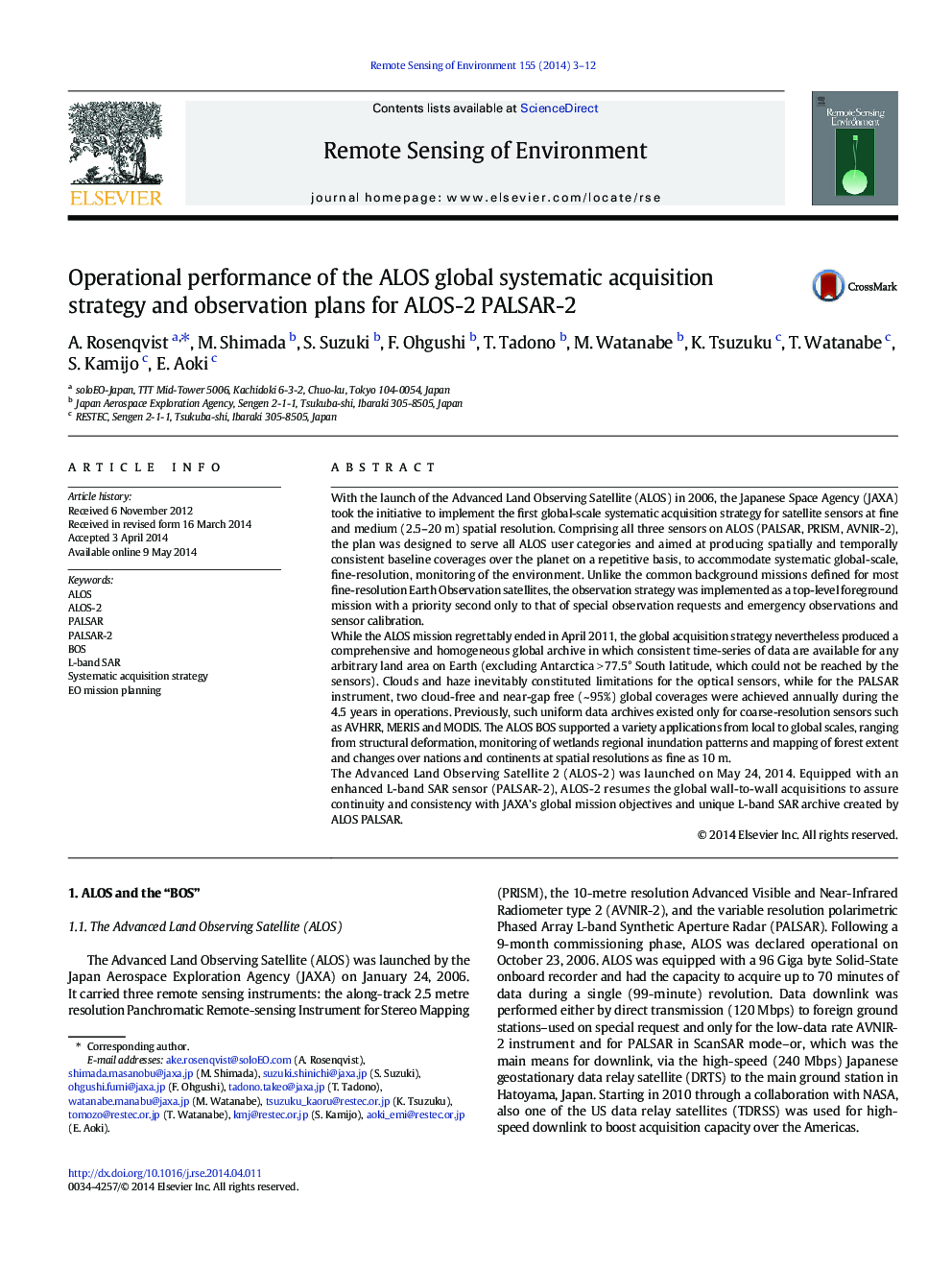| کد مقاله | کد نشریه | سال انتشار | مقاله انگلیسی | نسخه تمام متن |
|---|---|---|---|---|
| 6346584 | 1621245 | 2014 | 10 صفحه PDF | دانلود رایگان |

- First global acquisition strategy implemented for a mid-resolution SAR mission
- Continental wall-to-wall observation planning prevents fragmented data archives
- 75-80% average acquisition success rate achieved for the ALOS mission
- Follow-on mission (ALOS-2) will also feature systematic acquisition strategy
- Global strategic planning now accepted approach for many near-future missions
With the launch of the Advanced Land Observing Satellite (ALOS) in 2006, the Japanese Space Agency (JAXA) took the initiative to implement the first global-scale systematic acquisition strategy for satellite sensors at fine and medium (2.5-20 m) spatial resolution. Comprising all three sensors on ALOS (PALSAR, PRISM, AVNIR-2), the plan was designed to serve all ALOS user categories and aimed at producing spatially and temporally consistent baseline coverages over the planet on a repetitive basis, to accommodate systematic global-scale, fine-resolution, monitoring of the environment. Unlike the common background missions defined for most fine-resolution Earth Observation satellites, the observation strategy was implemented as a top-level foreground mission with a priority second only to that of special observation requests and emergency observations and sensor calibration.While the ALOS mission regrettably ended in April 2011, the global acquisition strategy nevertheless produced a comprehensive and homogeneous global archive in which consistent time-series of data are available for any arbitrary land area on Earth (excluding Antarctica > 77.5° South latitude, which could not be reached by the sensors). Clouds and haze inevitably constituted limitations for the optical sensors, while for the PALSAR instrument, two cloud-free and near-gap free (~ 95%) global coverages were achieved annually during the 4.5 years in operations. Previously, such uniform data archives existed only for coarse-resolution sensors such as AVHRR, MERIS and MODIS. The ALOS BOS supported a variety applications from local to global scales, ranging from structural deformation, monitoring of wetlands regional inundation patterns and mapping of forest extent and changes over nations and continents at spatial resolutions as fine as 10 m.The Advanced Land Observing Satellite 2 (ALOS-2) was launched on May 24, 2014. Equipped with an enhanced L-band SAR sensor (PALSAR-2), ALOS-2 resumes the global wall-to-wall acquisitions to assure continuity and consistency with JAXA's global mission objectives and unique L-band SAR archive created by ALOS PALSAR.
Journal: Remote Sensing of Environment - Volume 155, December 2014, Pages 3-12